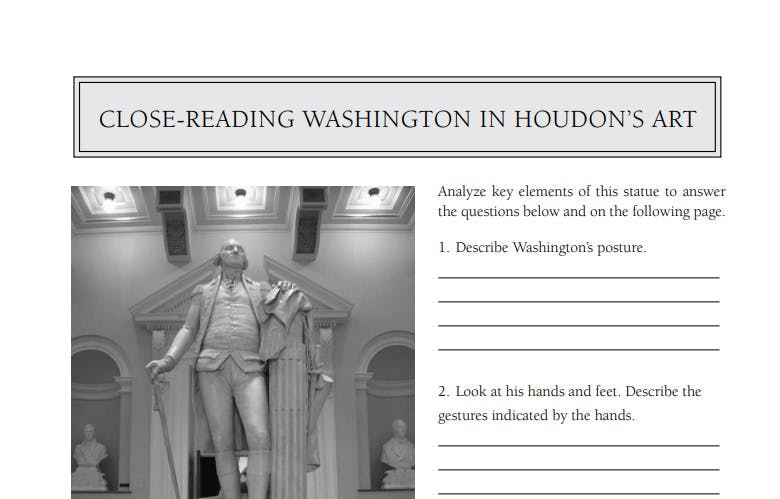Close Reading Washington in Houdon’s Art
Analyze key elements of this statue to answer the questions below and on the following page.

Jean-Antoine Houdon’s sculpture of Washington, seen from the front. Virginia State Capitol Richmond, Virginia. Albert Herring for Wikimedia.
- Describe Washington’s posture.
- Look at his hands and feet. Describe the gestures indicated by the hands.
- What does the placement of his feet indicate about him?
- Describe his facial expression. Where is his gaze directed in relation to the statue itself? What might the sculptor have been indicating about Washington in sculpting his face in this way?
- Neoclassical sculptures of Houdon’s and Washington’s time typically depicted their subjects wearing the garments of antiquity. Washington wanted to be shown in contemporary clothing and is shown in military garb. What does this communicate about his personality, temperament, and what he valued?
- Washington’s left arm, as well as his cape and a sword, are resting on a fasces (a symbol of power). He is wearing his military uniform. What does this communicate about Washington?
- Behind Washington, visible through his legs, is a plow. In his right hand is a cane. What does this communicate about him?
- Taken as a whole, the imagery alludes to the ancient Roman, Cincinnatus.* Based on what you know about both Cincinnatus and Washington, what is the sculptor conveying to the viewer about Washington’s priorities and his character?
- How might the imagery of both military and farm life reference Washington’s self-governance?
*Lucius Quinctius Cincinnatus was an ancient Roman soldier and statesman who worked on his own farm until, during an invasion, he was asked to serve as dictator of Rome. He did so, and after the Roman victory over the invaders, he relinquished his power in order to return to his farm.
